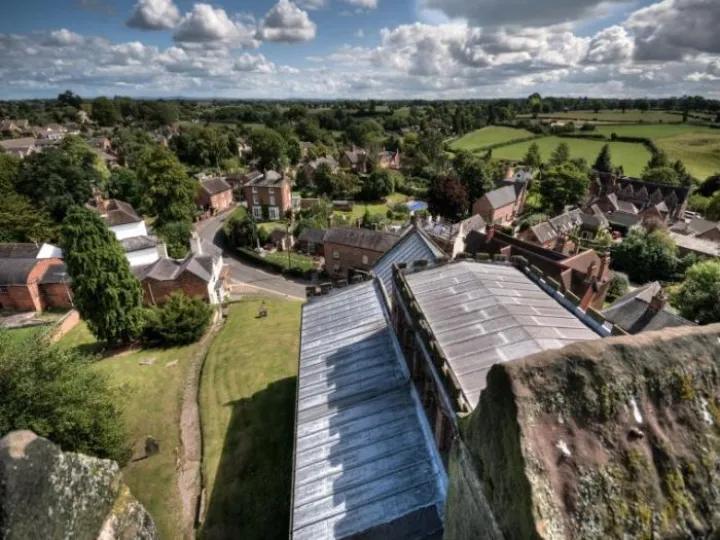







King Edmund killed by the Vikings
Little is known for sure of the life of the East Anglian king Edmund, but there are many legends associated with him, especially his death and subsequent miraculous events.
One story has Saxon Edmund born in Nuremburg, but the most credible stories have him as descended from a line of English Saxon kings, his father being Aethelweard, who died in 854 when Edmund was still a boy of 14. Edmund was said to have been crowned by St Humbert on Christmas day 854, possibly in Bures St Mary in Suffolk.
Edmund's piety is well recorded, seen in his just treatment of his subjects, and in the story that he went into retreat at Hunstanton for a year, during which time he learned the Psalter by heart, a feat that in its day would have been deemed a considerable display of learning.
But it is Edmund's death which is the most remarkable element of his life. The Danes in 869 marched south from York through Mercia (the Midlands) and into East Anglia, where they took Thetford and used it as a base. According to one version of the tale Edmund refused to fight them, giving himself up to his enemies in accordance with Christ's turning the other cheek. In another he engages the Danes in a bloody battle.
The stories of Edmund's death on November 20th 869 are various too. Some have him dying in battle. Others, the majority, have him captured by the brutal Ubbe Ragnarsson and Ivar the Boneless. Refusing to renounce his religion Edmund is said to have undergone horrific treatment, either used for target practice by Danish bowmen, or even more horribly made a 'blood eagle' sacrifice, his ribs separated from his spine and his lungs pulled from his living body. Yet still he refused to renounce Christ, and was decapitated by the Danes in exasperation.
After his death Edmund quickly became accepted as a saint and a martyr. His body when seen years after his death was intact and without signs of decay, and even more miraculously was healed of its wounds, only a thin red line around his neck showing the brutality of his end. Miracles were attributed to him, and his shrine at Beadoriceworth became an important point of pilgrimage in early medieval England, the town changing its name to Bury St Edmunds (town of St Edmund). For a time St Edmund was England's patron saint, until St George replaced him
Ed – presumably after Brexit, St George (who was a Roman soldier of Greek origin) will no longer be eligible as Patron Saint of England, so perhaps St Edmund could stage a comeback in that role?
This article is from our news archive. As a result pictures or videos originally associated with it may have been removed and some of the content may no longer be accurate or relevant.
Get In Touch
AudlemOnline is powered by our active community.
Please send us your news and views using the button below:
Email: editor@audlem.org





